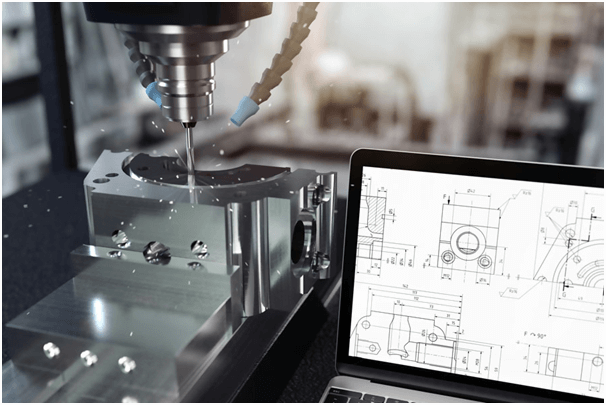CNC machining is a modern manufacturing procedure whereby a pre-programmed software dictates the movement of factory machinery and tools. The system is used to control sophisticated machineries such as grinders, lathes, routers, and mills. You can learn more about CNC machining to understand how they work. Let’s look at an overview of CNC Machining process.
All
to know regarding CNC Machining
Once a CNC system is activated, the
required cuts are programed in the software and dictated to corresponding
machinery and tools that perform the dimensional tasks as needed.
In the CNC programming process, the code
processor in the numerical system will assume flawless mechanism, irrespective
of errors. This is good when a CNC machine is dictated to cut in over one direction
simultaneously. A sequence of inputs outlines the placement of tools in
numerical control platform called part program.
With the numerical control tool,
programs are entered through punch cards. By contrast, the CNC machine programs
are keyed to the computer via the small keyboard. Note that CNC programming remains
in the PC’s memory. The code is prepared and edited by CNC programmers.
So, the CNC platform offers vast
computational capacity. The most significant part is that CNC platforms are
static because fresh prompts can be included in the pre-existing programs via
revised code.

Types
of CNC machines
The first numerical control tools were
created in the 1940s when motors were first used to control the motion of
pre-existing machines. As technology improved, the mechanisms were advanced
with analog PCs, and finally with digital PCs that resulted in the growth of
CNC machining.
A high number of today’s CNC machines
are entirely electronic. Some of the standard CNC run procedures comprise laser
cutting, hole punching, and ultrasonic welding. Here are the frequently used
tools in CNC platforms:
- CNC
mills
CNC mills can run on programs that
involve letter and number based prompts that direct pieces across different
distances. The programming used for a mill tool is based on G-code or other
unique language created by the manufacturing crew. Basic mills comprise of
three-axis platform(X, Y, and Z) even though the majority of latest mills can
accommodate up to three extra axes.
- Lathes
In lathe tools, indexable machines are used to cut pieces
in a circular direction. With CNC systems, the cuts engaged by lathe machines
are performed with high velocity and precision. CNC lathes are utilized to
generate intricate designs that can’t be done on manually operated versions of the
tool. Generally, CNC runs mills’ control functions are the same. As with the
first one, lathes are directed by G-code or unique proprietary code.
Nevertheless, many CNC lathes have two axes: X & Y.
- Plasma
cutters

In plasma cutter machines, materials are
cut with a plasma torch. The procedure is mostly applied to metal substances
but can be used on other materials. Plasma is created via a combination of
electrical arcs and compressed air gas. This helps to generate the heat and
speed needed to cut metal.
- Electric
discharge machines (EDM)
Also known as die sinking and spark
machining, electric-discharge matching is a procedure which molds workpieces
into specific shapes via electric sparks. With this process, current discharge
happens between tow electrodes, and this eliminates the parts of a particular
workpiece.
Once the space within the electrodes
reduces, the electric field becomes intense and making it stronger than
dielectric. This allows the current to pass within the two electrodes. Thus,
portions of workpieces are eliminated by each electrode. Subtypes of electric
discharge machining comprise:
- Since EDM, whereby a
workpiece and electrode are soaked in dielectric fluid for piece creation. - Wire EDM, where spark
erosion is used to eliminate the parts from conductive materials
Take-Away
In a procedure called flushing, particles from every
completed workpiece are eliminated by the liquid dielectric. The liquid appears
when the current within two electrodes stop, and it’s designed to get rid of
any electric charges.


